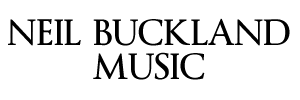Nature is a frequent theme in my music and in the videos I have made with my music, and I regard my music as natural music. Here is what I mean by this:
Natural Music
Natural music is music in harmony with the laws of nature.
Music is organized sound: sound organized into meaningful patterns by human beings (or by birds, which have their own music). Sound is, however, already organized in nature long before human (or avian) minds make their own patterns with it.
Sound begins as waves of compression and rarefaction in the air, waves that embody mathematical principles. When these waves impact our eardrums, the vibrations in our eardrums are processed by the middle ear and passed on to the inner ear. The inner ear analyzes the mathematical relationships between the different wavelengths of sound and passes that information on to the auditory centres in our brains. If the wavelengths are random (mathematically unrelated) we hear noise; if there are clear mathematical relationships between the different wavelengths, we hear music (pitch and timbre – melody, harmony and the characteristic sounds of different instruments and voices).
Music is mental play with the naturally-occurring mathematical properties of sound.
Ultimately, music is made in the mind, but the body responds to music too – tempo changes heart and respiratory rate, rhythm engages the body’s biological rhythms, dissonance increases muscle tension, and so on.
There are some kinds of music that aim to engage only the body, or only the intellect, or aim only to stir up primitive emotions such as anger or fear (1).
What I call natural music, by contrast, engages all parts of a person – mind, body and heart. In natural music, mind, heart and body work together harmoniously. (In this sense, natural music is holistic music; I have chosen not to use that term because it has New Age associations (2).)
Natural music has melody, because melody gives audible structure and a sense of meaning to music. Music with melody functions like a language (though it communicates like poetry rather than prose).
Harmony, when it is present in music (many kinds of music around the world do not have it), also works in accord with the laws of nature and the physics of sound.
Rhythm in natural music relates to the rhythms of nature. Natural rhythms are never completely regular, just as the length of a year is not exactly 365 days. Natural rhythms, rhythms created by human beings, are subtle and flexible, quite different to the dull mechanical repetitiveness of rhythms generated by a machine or electronic device.
Natural music is not mechanical.
Natural music grows, and changes or develops as it grows, like a living thing. In natural music there is little in the way of literal repetition, and when there is, it’s generally transformed by context (3). Natural music is not mechanical.
Natural music is music that reflects nature and natural principles, music in harmony with the laws of nature. Natural music creates harmony in human beings, bringing the various parts of our human nature into concord with each other. Because it treats human beings as a part of nature, natural music brings human nature into harmony with all of nature.
(1) Music that engages only (or mostly) the intellect: twelve-tone, serialist and atonal music, the 14th century avant-garde; music that engages only (or almost only) the body: taiko drumming, Yoruba drumming, some genres of popular music.
(2) As in, e.g., the album ‘Holistic Music – Peaceful Healing Tracks and Nature Songs, New Age Sound Therapy’.
(3) Examples: the recapitulation of the first subject in sonata form movements; the ritornello in baroque concerto movements.

Leave A Comment